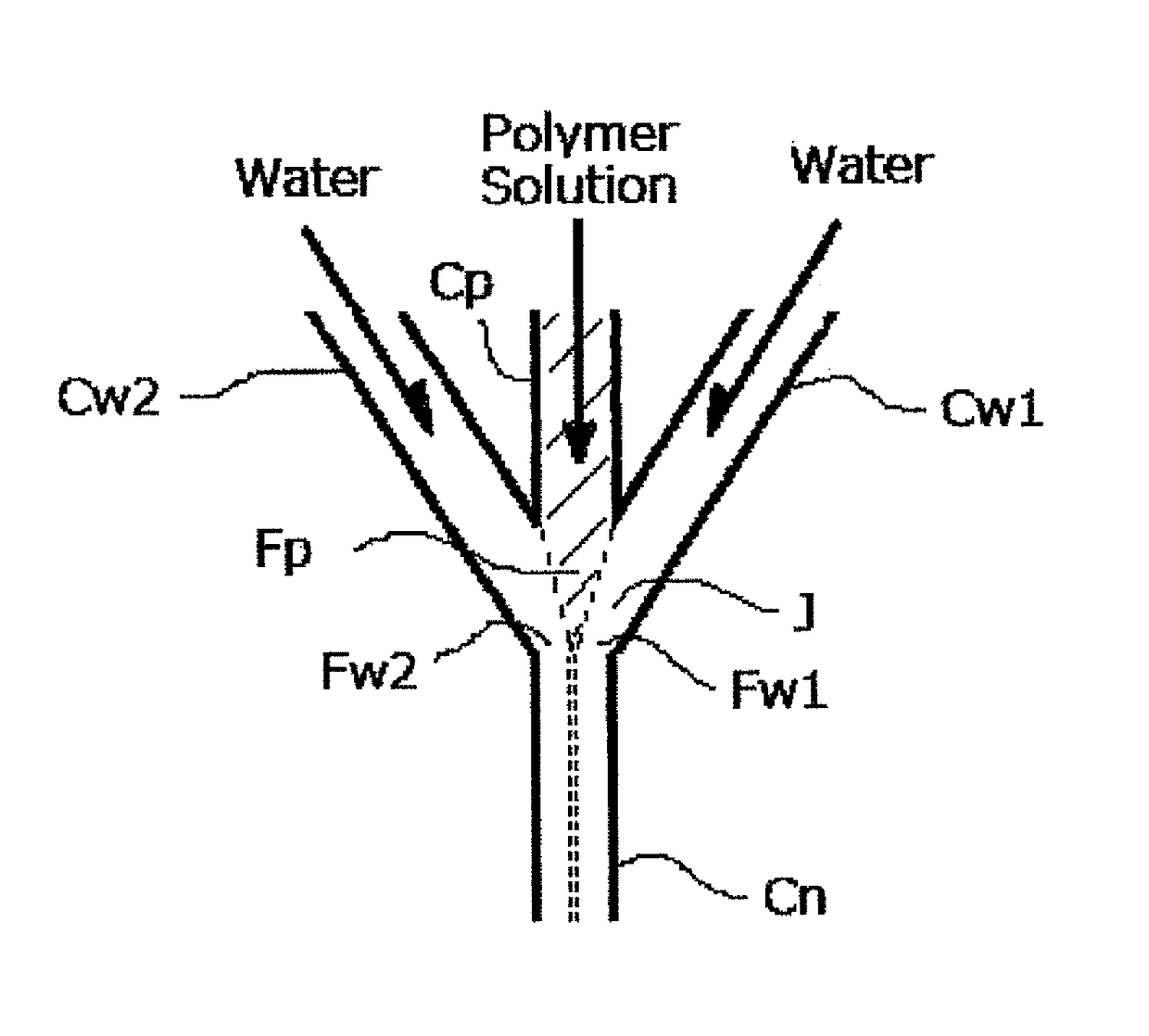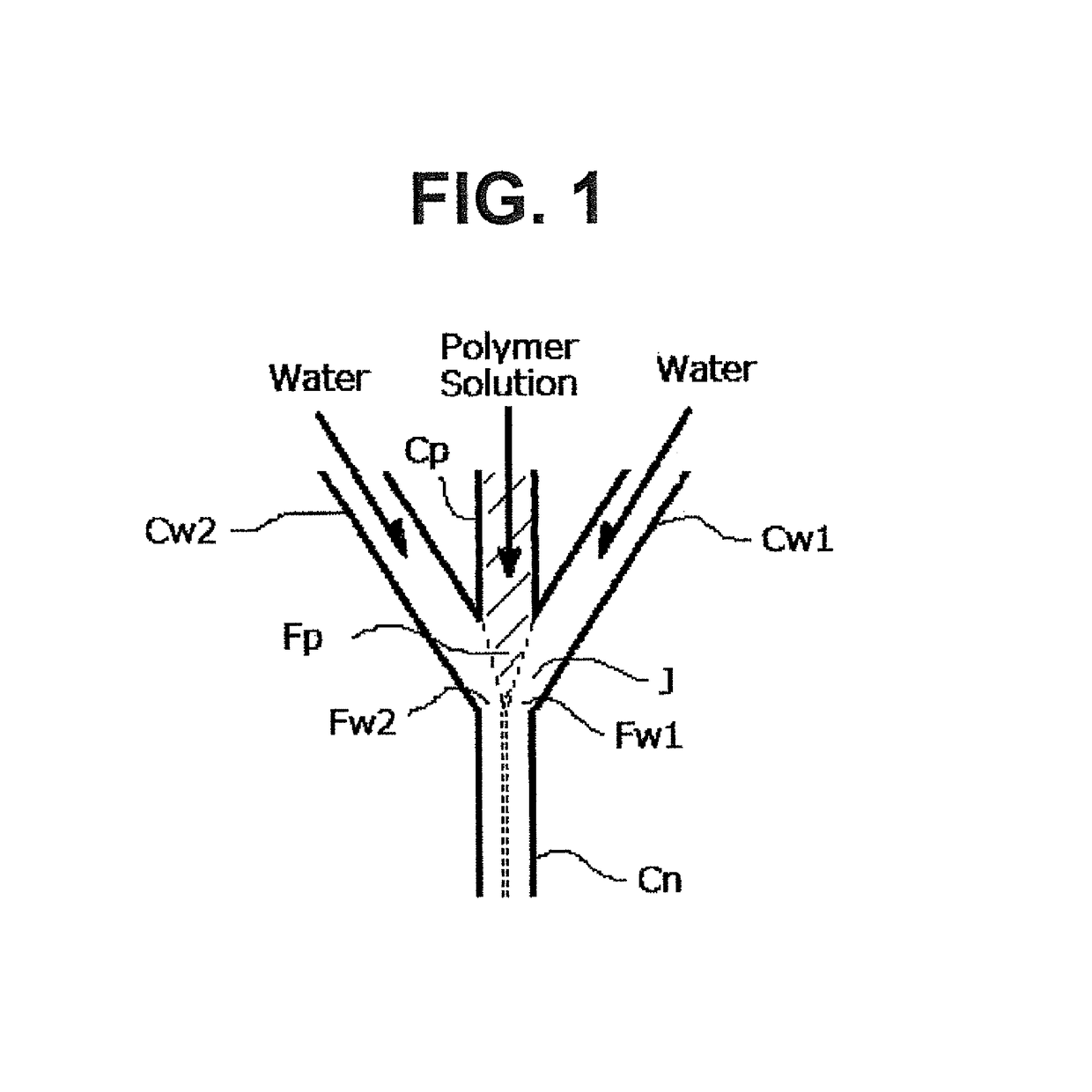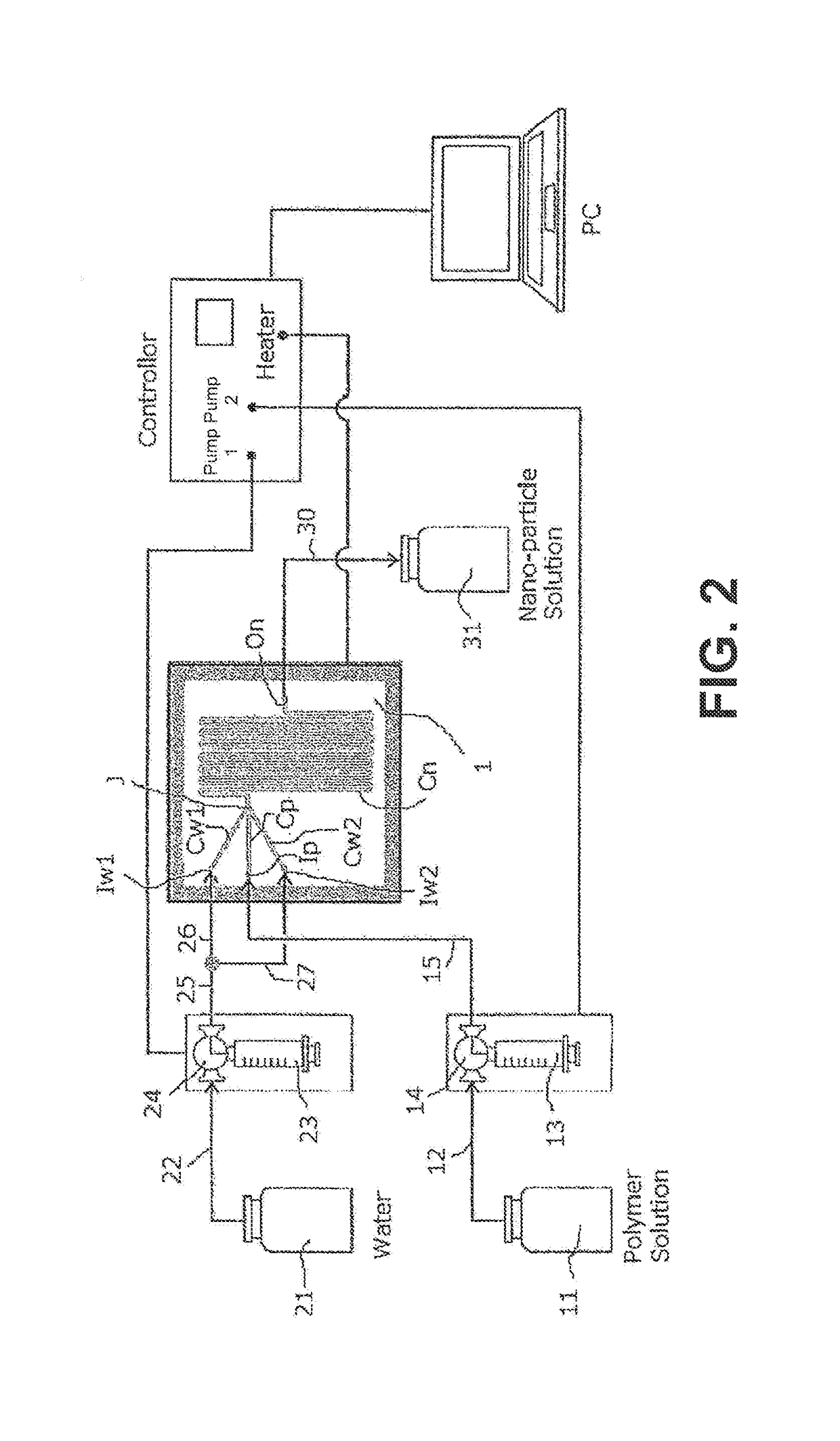Manufacturing method for nanoparticle
a nanoparticle and manufacturing method technology, applied in the field of nanomedicine, can solve the problems of difficult to provide precious control of particle size, complicated process, and adverse reaction, and achieve the effects of improving production efficiency, no irregularity, and uniform particle diameter
- Summary
- Abstract
- Description
- Claims
- Application Information
AI Technical Summary
Benefits of technology
Problems solved by technology
Method used
Image
Examples
example 1
[0164]Nanoparticles were prepared from the linear type amphiphilic block polymer (PLLA39-PSar74) using apparatuses illustrated in FIG. 1-3 as follows.
[0165]Milli-Q was used for water 21. The amphiphilic block polymer (PLLA39-PSar74) was dissolved in DMF to provide the 8 mg / mL solution, and stirred at 60 for 30 min in the oil bath and then cooled down to room temperature to provide the polymer solution 11 to be used.
[0166]Referring to the apparatus in FIGs., the syringe pump 14, 24 (Hamilton PSD / 3) was used to send the solution, and two solutions of the polymer solution 11 and the water system solution 21 were induced to the micro flow cell 1 fixed to the jig through Teflon® tube 12, 15, 22, 25, 26, 27. A heater and a thermocouple are installed to the jig so that the micro flow cell can be heated. The syringe pumps 14, 24 are connected to a personal computer through a controller so that the flow rate control could be conducted by the personal computer. First, the flow passage Cn in t...
example 2
[0187]Instead of the micro flow cell 1 referring to FIG. 1-3, the micro flow cell having the same confluent structure of flow passages but double turn number of the nanoparticle formation flow passage Cn structure is employed and other than that, the same operations as Example 1 have been conducted. FIG. 7(D) is a schematic view illustrating the flow passages of the micro flow cell.
[0188]Referring to Example 2, the width of flow passage of the micro flow cell is 700 μm; the flow passage length thereof is 612 mm; the flow capacity is 29 μL; and the turn number relative to the nanoparticle formation flow passage Cn in the downstream from the confluent section J is 28. Temperature of the flow passage of the micro flow cell was 25.
[0189](a) Firstly, under FRR=9 condition, the polymer solution and water were induced to the polymer solution supply flow passage Cp and two water system solution supply flow passage Cw1, Cw2 to make 1000 μL / min of the total flow rate of the polymer solution a...
PUM
| Property | Measurement | Unit |
|---|---|---|
| diameter | aaaaa | aaaaa |
| polydispersity index | aaaaa | aaaaa |
| particle diameters | aaaaa | aaaaa |
Abstract
Description
Claims
Application Information
 Login to View More
Login to View More - R&D
- Intellectual Property
- Life Sciences
- Materials
- Tech Scout
- Unparalleled Data Quality
- Higher Quality Content
- 60% Fewer Hallucinations
Browse by: Latest US Patents, China's latest patents, Technical Efficacy Thesaurus, Application Domain, Technology Topic, Popular Technical Reports.
© 2025 PatSnap. All rights reserved.Legal|Privacy policy|Modern Slavery Act Transparency Statement|Sitemap|About US| Contact US: help@patsnap.com



